Don’t Let Struggling Readers Sink: How the Right Kind of Tutoring Helps Them Thrive
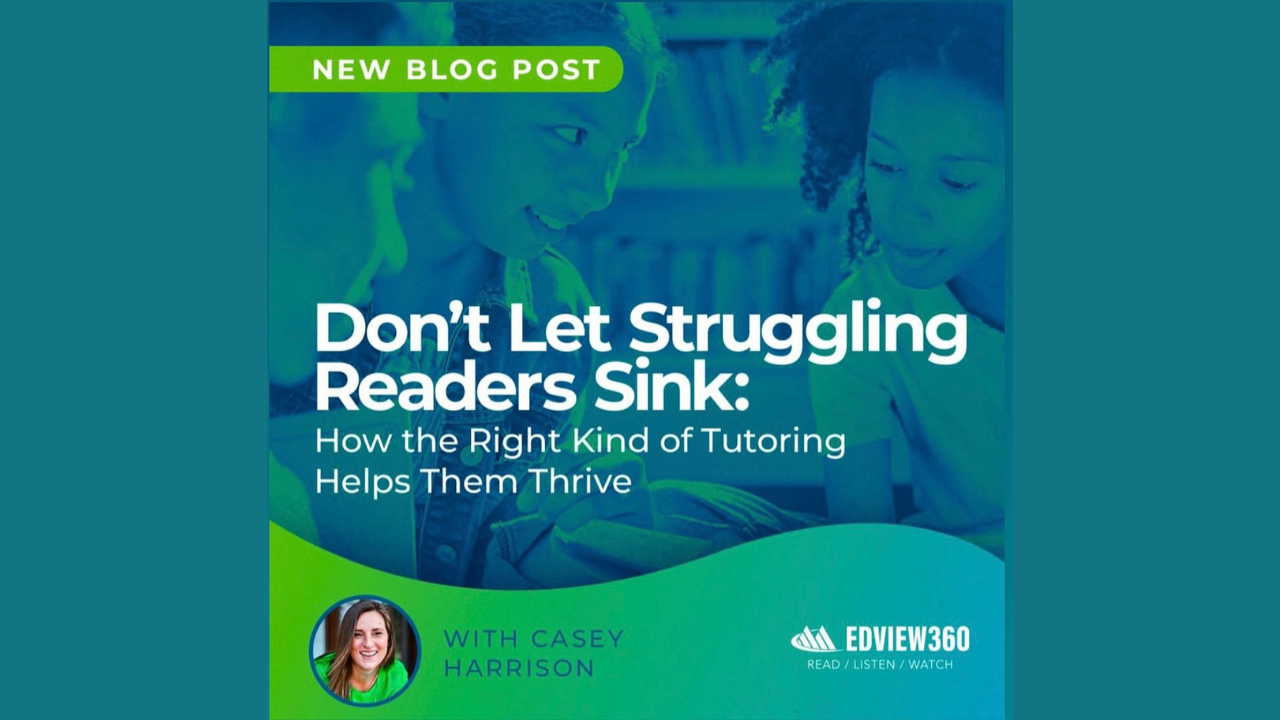
I’m thrilled to share a guest post I wrote for EdView360, titled ‘Don’t Let Struggling Readers Sink: How the Right Kind of Tutoring Helps Them Thrive.’ In it, I explore how struggling readers—especially those with dyslexia—need more than hope to catch up; they need Structured Literacy, a research-backed, systematic approach to reading and writing instruction. I explain why this method works and what it entails and offer practical tips for effective tutoring that can transform struggling readers into confident navigators. Check out the full post here —I’d love to hear your feedback or insights!
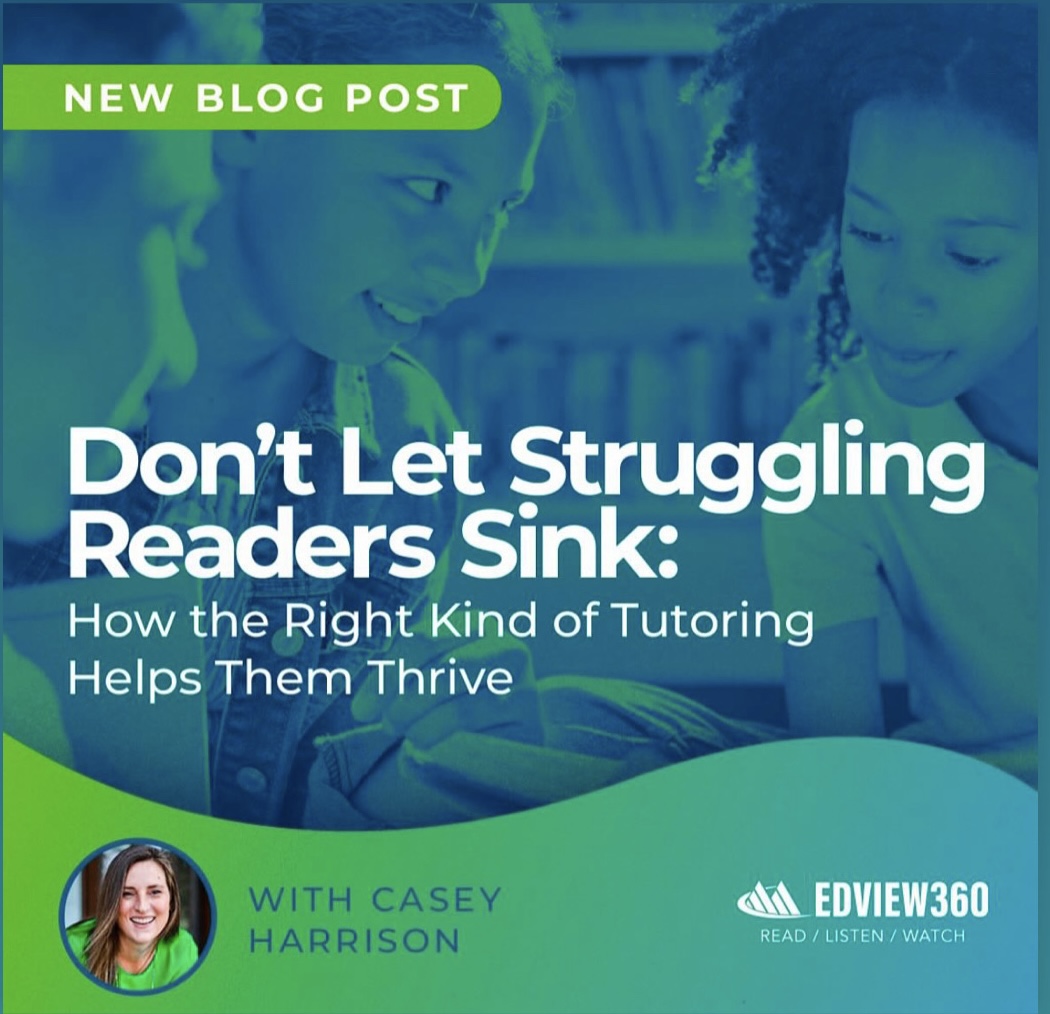
Aim-Anchor-Release-Reset a strategy for literacy instruction

Today, my twins are competing in the state archery competition, and as a proud mama and forever teacher (☺️) their team saying is one that I feel connects to the current state of reading instruction as well. One of their team sayings is: Draw, Aim, Anchor, Release.
It got me thinking of sayings we can use with our students in reading instruction and what I do in my dyslexia therapy lessons. So this is my little twist on the archery saying: Aim, Anchor, Release, Reset.

A Strategy for Literacy Instruction
This message is great for my children and their archery, but also for my students and myself as I look at our reading instruction and lessons. This got me thinking of how we teach our students, and ways to bring students into this cycle of metacognitive practices to develop their knowledge, awareness, engagement, motivation, and ownership of their learning.
Aim - Focus on our goal or task at hand and aim for those intentions.
How wonderful is this concept for not only our stu...
Understanding When and Why We Use Nonsense Words

After one of my recent podcasts, I received a question about using nonsense words. I love using the Nonsense Word Fluency assessment to gain insight into a student's alphabetic principle and primary phonics. Students need to apply their knowledge of phoneme-grapheme correspondences to decode accurately. However, I caution teachers when using nonsense words within their lessons; why?
This is an important topic to consider as more curriculums implement nonsense words in their lessons, plus many nonsense word lists are for sale that are teacher-made on many platforms, blogs, etc. As we reflect on this practice, we want to consider the purpose of nonsense words, the orthographic patterns used, and the alphabetic principle.
Purpose of Nonsense Words
The original purpose for nonsense words was to be used within an assessment to determine if the student had grasped the alphabetic principle and primary phonics. Research has shown that using nonsense words as an assessment can provide unique...
Quick Tip for Helping Student Comprehension Through Language Structure

Do you ever find your students reading sentences well, and yet they have confusions when you discuss the text? Students need to understand that there are two ways in which to think about a text when reading.
First, they need to understand the words as written on the page and literally be able to read them. This is often referred to as the surface code. When speaking with my students, I refer to this as the “reading voice”. At the basic form, this is the ability to read the words on the page. In addition, there is a second part to reading, in which the reader must pull out the meaning of the text, infer the lesson or message that the author wants the reader to take away.
This deeper level of connecting with the text can certainly become a hurdle if there is a lack of access to vocabulary, background knowledge, language structure, and more. There is a great level of depth we can cover with surface code and text base - but today I want to share a quick tip on helping students with lang...
What are syllable types and why do they matter - Part 1
*This is part 1 of the series about syllables and syllable types in reading instruction.
The ultimate goal of reading is for our children to achieve high levels of comprehension. We want this for ALL children. Reading comprehension is a product of printed word recognition and language comprehension (Gough & Tunmer, 1986). This means that weakness in either (or both) domains leads to weak reading comprehension.

The Simple View of Reading
The Simple View of Reading, by Gough & Tunmer, breaks apart the very complex elements needed for reading into two broad categories: word recognition and language comprehension. Reading comprehension is a product of these two categories.
Word recognition, or the accurate and fast retrieval of decoded word forms, is essential for developing reading comprehension. Students who can not accurately read the words on the page will not fully comprehend what is being read. This automated word reading frees up mental resources and allows for close atten...
What is the 3-Cueing Approach, and Why Is It Getting Banned?

Significant educational shifts are happening as states move toward aligning instruction to the science of reading, the vast, interdisciplinary body of scientifically-based research regarding reading, writing, and learning. Many are implementing laws and policies related to evidence-based reading instruction to bring change to classrooms. Since 2013, 29 states and the District of Columbia have passed laws or implemented new policies related to reading instruction. Recently, in Texas, legislation was put forth by House Bill 2162, which proposed banning the use of the three-cueing model in reading instruction. While Texas is not the first state to do so, it most likely won't be the last. What does this mean for teaching reading, and does it matter?
Why the Shift?
The current state of reading scores nationwide has raised questions about reading instruction and set a wave of change in motion. Emily Hanford's article Hard Words, podcasts, and those in the education field that have called ...
Shifting our approach to reading instruction from reactive to proactive
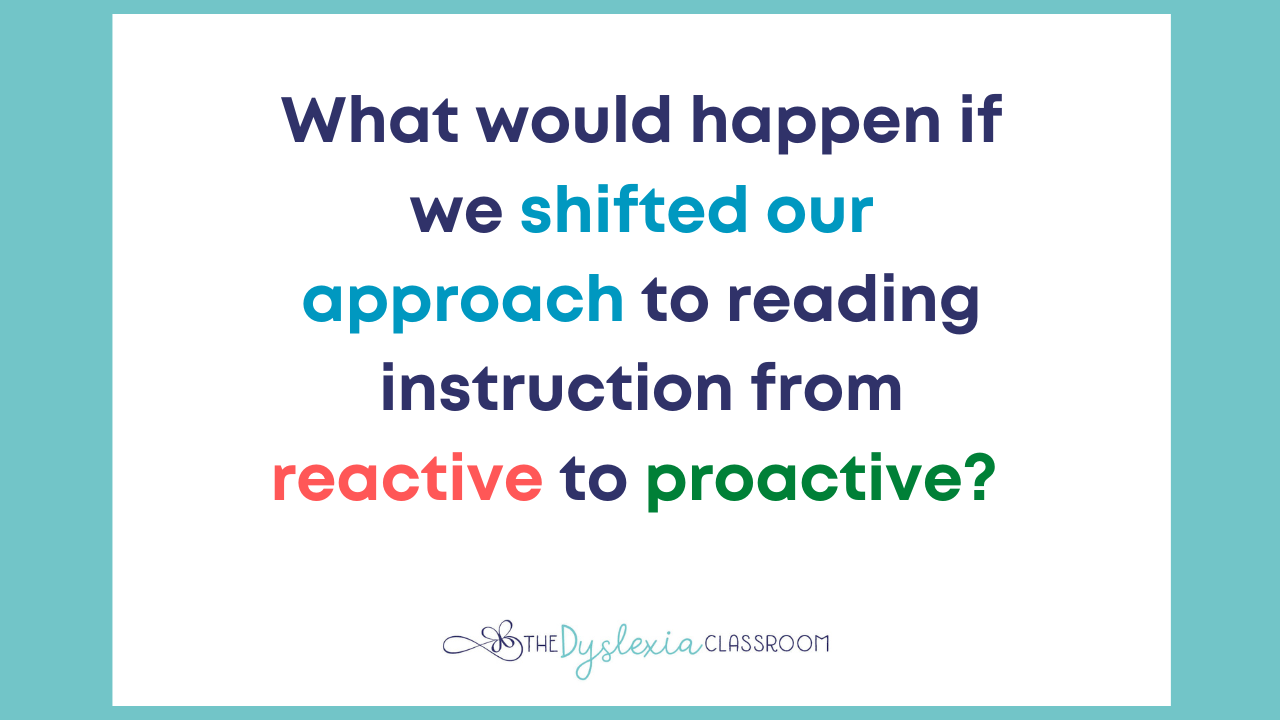
What would happen if we shifted our approach to reading instruction from reactive to proactive?
We need to stop and think about why our students struggle with reading at a national level. According to the last National Report Card, 35% of all 4th-graders and 34% of all 8th graders performed at or above proficiency. That leaves 65-66% of our students reading at the basic level or below.
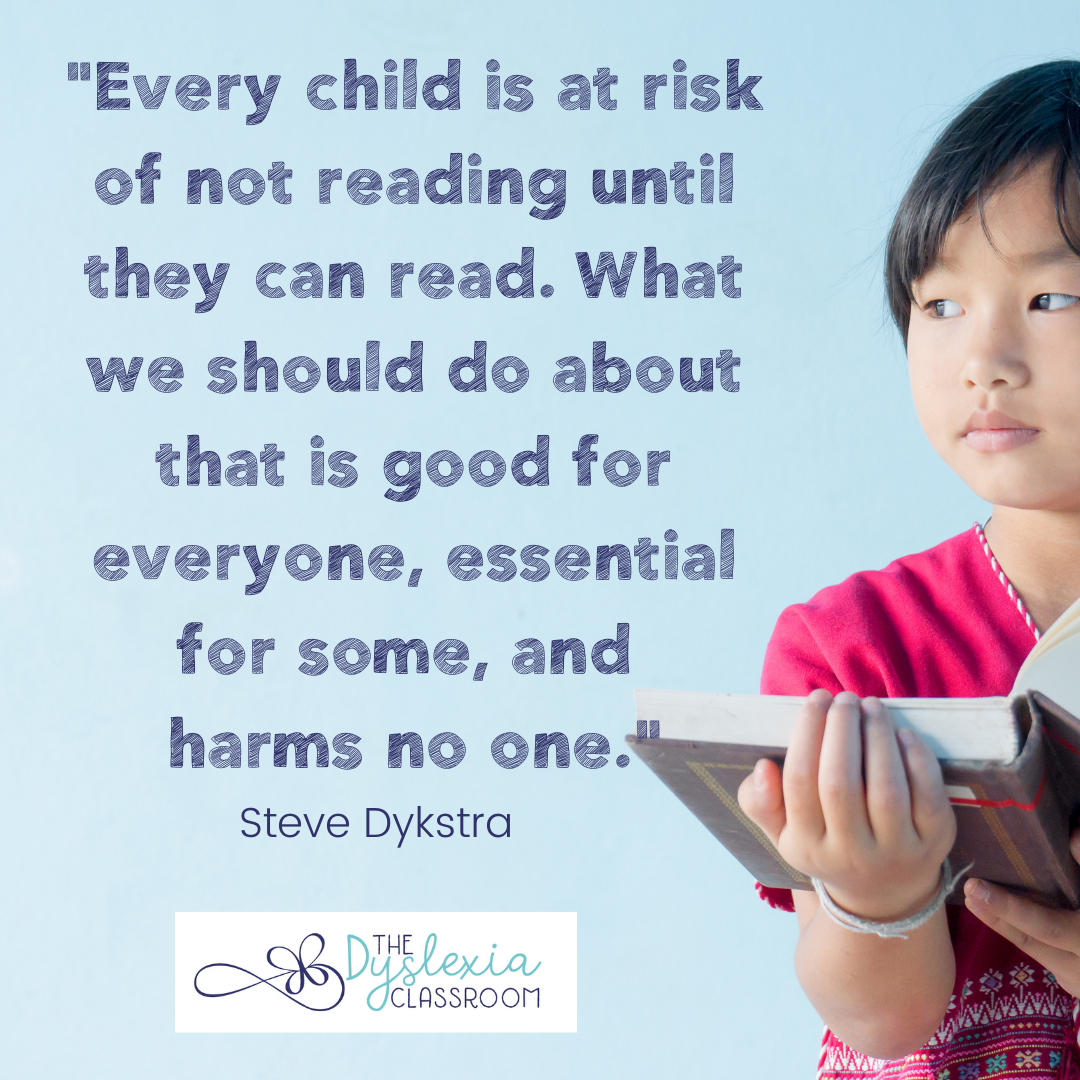
The number of students behind in reading requires shifting our approach at the core. All students are at risk of not having until they can read.
I have always felt that this reactive approach is like a sinking ship where we are working so hard to scoop the water from the boat that we don't analyze why the ship is sinking in the first place. We will never be able to keep the ship afloat this way, and our national reading scores prove this.
So what can we do as educators in the system? Providing core instruction within the general classroom that follows the principles of structured literacy and in...
Code and Read - How using diacritical marks aids students with dyslexia
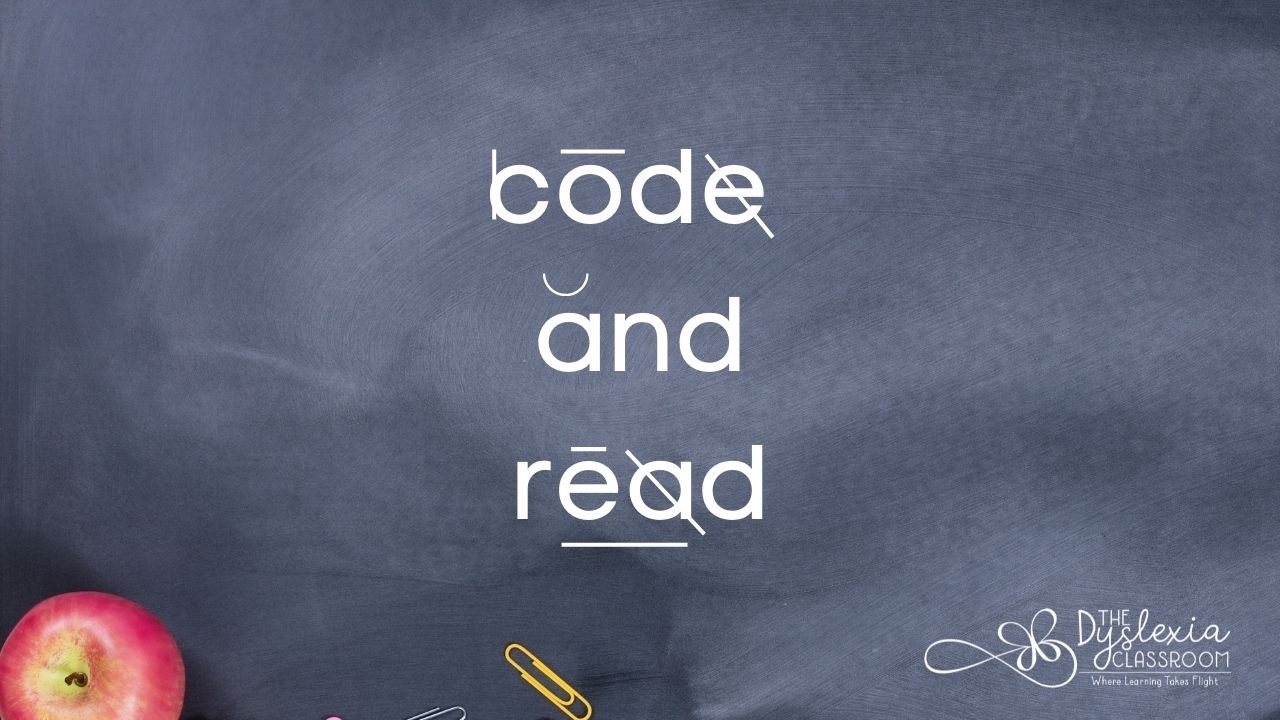
At a recent training, one of the participants asked me about our students using coding (the diacritical marks used when analyzing words) and was unsure of the benefits. I love that she asked me this because it is also something many parents may find unfamiliar.
Coding words allow students who are learning to read, who have dyslexia, or who may struggle to have a clear strategy for decoding unknown words. The use of set markings is a scaffold within our instruction that helps students focus on key components of a word. Coding removes the guessing of words because students have an explicit and systematic approach to accessing unknown words. Coding is taught systematically and explicitly through multi-sensory learning within a structured literacy approach.
The goal of coding is to gain reading with accuracy. Accuracy is the ability to decode single words correctly with freedom from mistakes or errors. This scaffold supports students as they learn and practice a new skill - primarily th...
Why Repetition is Important in Reading Instruction
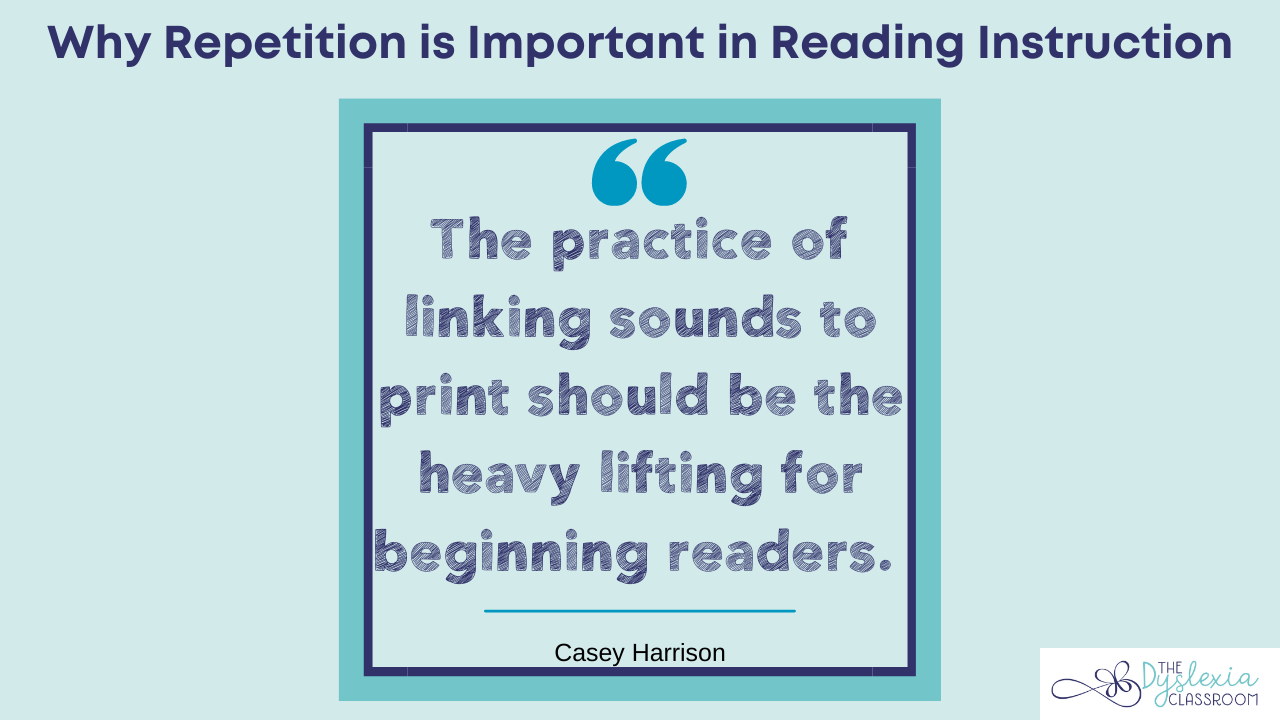
The number of repetitions matter when planning reading instruction for the dyslexic learner, While some may believe that our lessons are filled with constant drilling of skills, this is not the case. Structured literacy is designed to weave in multiple practices within a lesson and review previously learned skills.
I like to think of it this way: when athletes learn a new skill, they practice the movement repeatedly with the goal of perfection in mind. I was a competitive gymnast, and we would practice our routines to the point of automaticity so that when it was time to perform, it was automatic. It had been practiced over and over again. This repetition made the skills stick. A key thing to remember about repetition is that perfect practice is what makes perfect — not just practice. Performing tasks repetitively and correctly is what helps the skills learned from those tasks set in ("The Power of Repetition," 2016).
Learning happens in a very similar way. With correct repetition o...
Why Use Audiobooks with Dyslexic Learners?
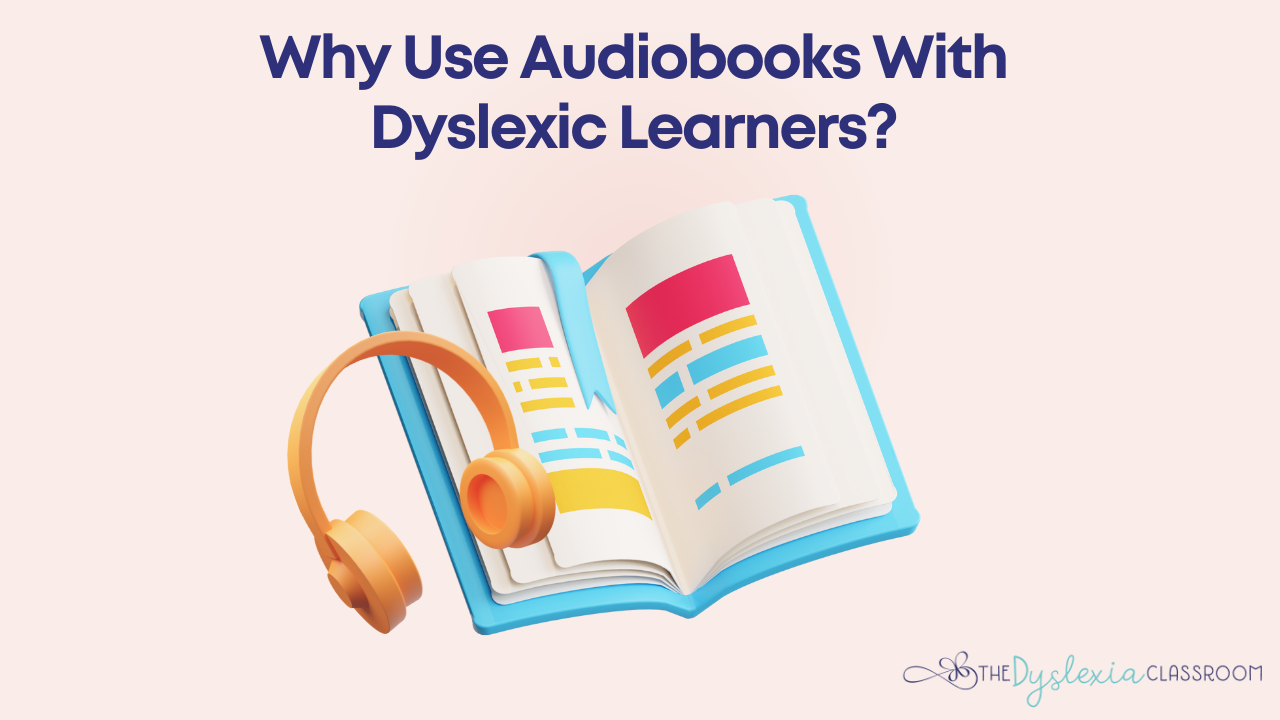
The topic of audiobooks comes up often and is an accommodation that I recommend for all of my students. Audiobooks have gained popularity among the general population, with 1.3 billion dollars in 2020. While audiobooks are an excellent tool for anyone, they provide additional benefits for those with dyslexia or other learning differences. We know the importance of becoming literate in our society, but how do audiobooks weigh into our children's reading goals? Let's dig into some of the benefits and possible obstacles.
Benefits of Audiobooks
Audiobooks provide access to grade-level and higher-level text
Why is this important? We need to provide students with the tools to access the curriculum. Audiobooks provide this bridge. Students are given audiobook access for curriculum reading for multiple reasons.
Audiobooks level the playing field
Audiobooks are an accommodation that helps ensure our dyslexic learners can access the curriculum. It levels the playing field as students work ...



